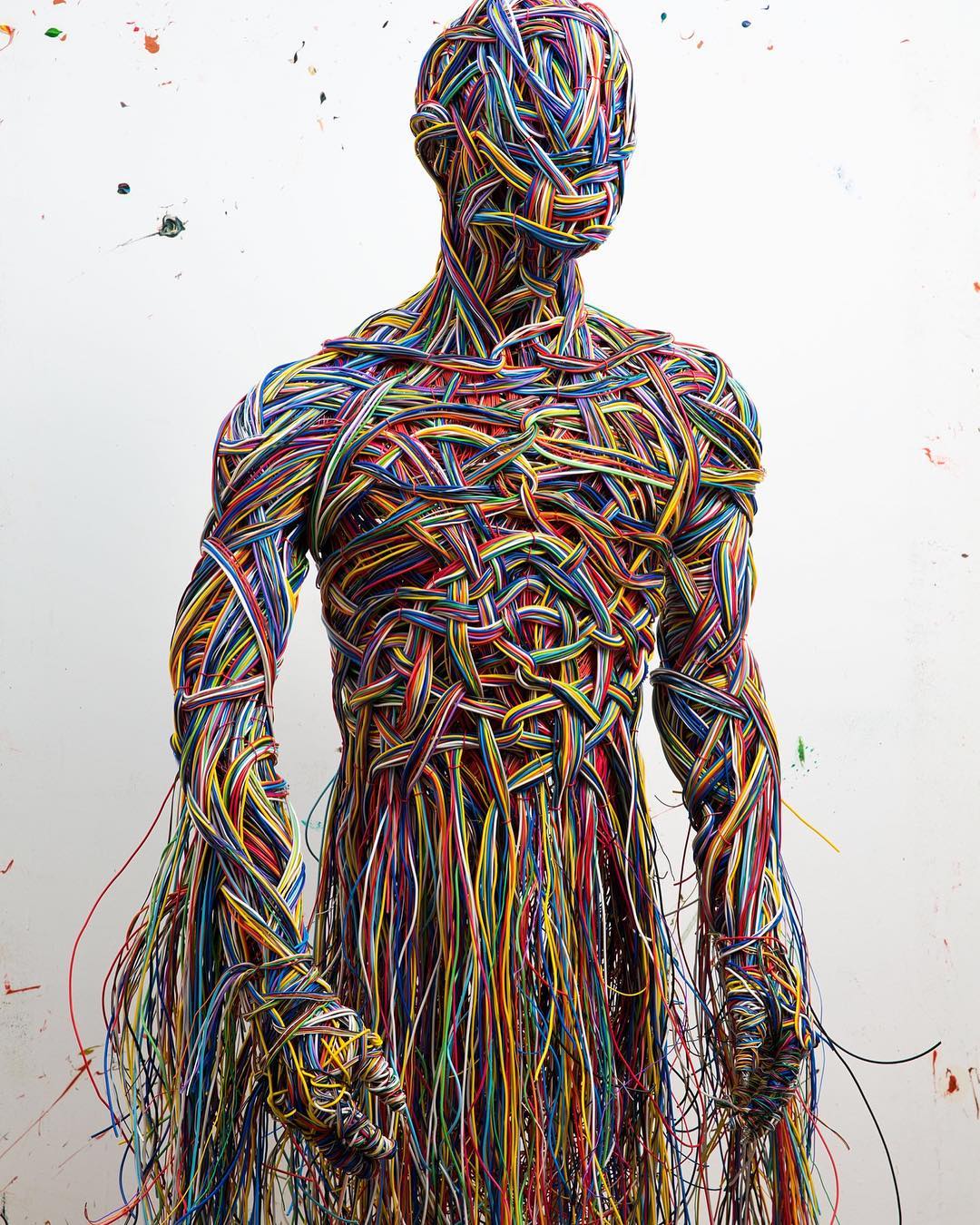
When we think of beauty in nature, we immediately think of things that dazzle the senses- the prominence of a mountain, the expanse of the sea, the unfolding of the life of a flower. For Polish artist Aneta Regel, there is also a beauty in nature’s unpredictability: it’s ability to “sculpt” rock formations from weathering and erosion, or the dense arrangements of moss on a tree branch. The London based ceramist challenges our perceptions with her work and makes us interested in these overlooked transformations.
At first glace, Regel’s sculptures look strikingly like fragments of real branches, bark, rocks, and boulders (some measuring life-size, or as tall as the artist herself), but at the same time, they are utterly abstract as they are broken into pieces and twisted or contorted into new forms that do not exist in nature. Her sculptures are a cross between natural and the malleable.

Each piece starts with breaking up stones and incorporating them into the clay, primarily using her hands, but leaving other areas untouched to create a rough or natural feel. Then, she leaves the pieces to dry themselves rather than being fired in a kiln. “I create objects that exist neither in the natural or in the manufactured world, but which, once brought into being, can reflect and transmit information and feelings about nature and my own existence,” she says.

A native of northern Poland, Regel would often find natural objects very similar to her art pieces; large stones, smooth round excrescences left behind by glaciers, which have evolved today into symbols of healing and endowed with anthropomorphic and quasi-magical powers. While her work provides stunning examples of formations that nature has to offer, it also considers their spiritual and emotional value.

“Forms of nature and natural materials fascinate me. My aim is to juxtapose the natural and human in order to create a dynamic friction. These landscapes are therefore displacements from the natural world to the constructed. I want to put life into form, arrest motion, capture energy and rhythm. Not simply a shape, but a feeling, a smell, energy or an emotion.”










 Pennsylvania based photographer
Pennsylvania based photographer 
 Los Angeles based multimedia artist
Los Angeles based multimedia artist 